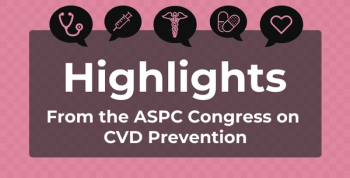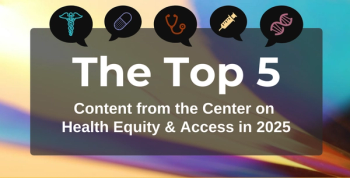
Rare Cases of New-Onset Heart Failure Linked to COVID-19
Findings from a new study out of Mount Sinai in New York show a small but rare chance of developing new-onset heart failure following hospitalization for COVID-19.
A small percentage of patients admitted to Mount Sinai Health System hospitals in the first few months of the COVID-19 pandemic developed new-onset
Findings were published online today in Journal of the American College of Cardiology.
“Precipitation of heart failure has been described in the setting of COVID-19, yet population-based studies are needed to provide a context within which the frequency of SARS-CoV-2–related heart failure can be appreciated,” the authors wrote.
They came to this conclusion after reviewing the electronic medical records (EMRs) of 6439 hospitalized patients with COVID-19 cases confirmed via polymerase chain reaction who were admitted to Mount Sinai hospitals between February 27 and June 26, 2020, and who stayed for an average 7 days.
The patients who developed new-onset heart failure (n = 37; 0.6%) were younger compared with those with a history of heart disease or its risk factors, 43 vs 73 years; were mostly male; had a lower body mass index; and had fewer comorbidities. Of these, 22% did not have a history of CVD or previous risk factors for it, 38% had a history of heart disease, and 41% had at least 1 CVD risk factor but no heart disease.
In the study, to have a new diagnosis of heart failure, patients had to meet 2 of the following:
- Have signs/symptoms of congestion
- Have elevated brain natriuretic peptide (BNP) levels (BNP > 100 pg/mL or NTproBNP > 300 pg/mL)
- X-ray or echocardiogram (ECG) showing cardiomegaly and/or congestion and diastolic/systolic dysfunction, respectively
Of the 28 patients who underwent ECG, 79% had a left ventricular ejection fraction below 50%.
In addition, the patients with new-onset heart failure had almost double the risk of both intensive care unit (ICU) admission and intubation compared with patients who did not develop heart failure:
- ICU admission: 32% vs 17% (subdistribution HR [sHR], 2.2; 95% CI, 1.2-3.8)
- Intubation: 24% vs 12% (sHR, 2.2; 95% CI, 1.2-4.3)
Compared with the individuals with cardiovascular risk factors and CVD, respectively, they also had higher troponin and BNP plasma levels:
- Troponin: 221.45 vs 0.03 vs 0.18 ng/mL
- BNP: 588 vs 163 vs 356 pg/mL
However, mortality was close to equal between the groups, coming in at 27% and 25% (sHR, 1.1; 95% CI, 0.6-2.0), respectively.
“This is one of the largest studies to date to specifically capture instances of new heart failure diagnosis among patients hospitalized with COVID-19,” lead researcher Anu Lala, MD, director of Heart Failure Research at the Icahn School of Medicine at Mount Sinai, said in a
Future studies should focus on delineating the underlying mechanisms that cause COVID-19 to trigger heart failure, with the researchers noting that even though their results show just a few cases, physicians need to be informed of the potential for this complication so they can “monitor for signs of congestion more consistent with heart failure than COVID-19 alone.”
Reference
Alvarez-Garcia J, Jaladanki S, Rivas-Lasarte ME, et al. New heart failure diagnoses among patients hospitalized for COVID-19. J Am Coll Cardiol. Published online April 26, 2021.
Newsletter
Stay ahead of policy, cost, and value—subscribe to AJMC for expert insights at the intersection of clinical care and health economics.








































